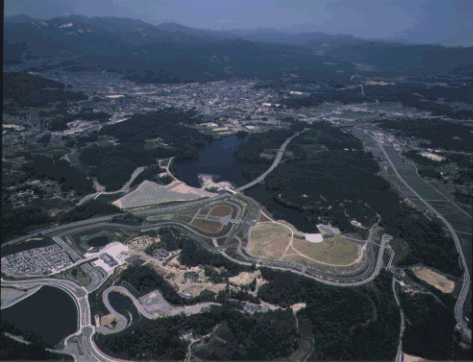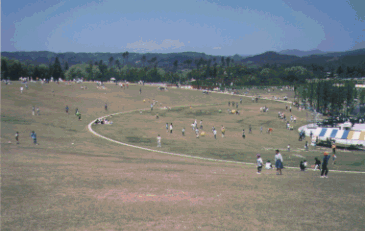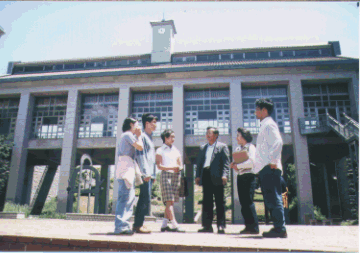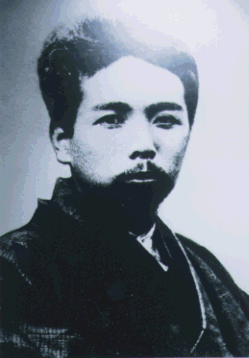Meaning of the city symbol

| |
 |
This expresses as a whole the meaning of the character "Sho", which means "level".
The fusion of 6 villages and 1 town formed the harmonious city Shobara, expressed by
the Chinese characters for "6" and "1". |
 Shobara Town Area
|
The city of Shobara is located in the northeast part of Hiroshima Prefecture in
roughly the center of the Chugoku region. Burial mounds remain from around the
year 400 AD as do ancient steelmarking relis, telling the story of the city's
flourishing past. At the time, refined iron was carried to the Fukuyama area;
and since that time, a roadway system developed that spans in all directions from
Shobara. As time passed, this hub of business gradually grew into a city. During
the Edo period, the plentiful Kunikane Pond and Ueno Pond were created to form a
base for agricultural development, and the fuel wood industry thrived by utilizing
the area's rich forest resources. In 1882 rural district restructuring placed the
district office of the three districts of Onuka, Mikami, and Eso in Shobara. Then
in March 1954, the consolidation of seven towns and villages, with the former
Shobara-cho at the core, gave birth to the present city of Shobara. |
| |
|---|---|
Bihoku Hills National Park is the first national park to be located in the Chugoku
region, and is being built over 350 hectares of hills covered with akamatsu (Japanese
red pine) and includes scenic Kunikane Pond. (The area extends approximately 3.5 km
east and west and 1 km north and south.) A portion of the park was opened in April
1995. The theme of the park is "Hometown Enjoyment." Included in the park are the
following: Flower Meadow (Hana no Hiroba), a 3-hectare field where approximately
70 kinds of flowers blossom; Grass Meadow (Oshibafu Hiroba), an 8-hectare expanse that
permits the hosting of outdoor concerts and various events; Hiba Village (Hiba no Sato),
a place surrounded by various types of small trees where the Satoyama house, a kagura
hall (Shinto music and dance hall), and other structures remain unchanged for the
Woodlands Athletic Area (Rinkan Asurechikku), a recreational area located on a small
hill overlooking Kunikane Pond equipped with amusement equipmentsuch as a UFO slider
and Japanese pyramid. On weekends, the park is bustling with visitors, most of whom
are from the Chugoku region. A Star Village (Hoshi no Sato) auto campground is also
being planned, making the park a place where everyone can have fun. |
 Grass Meadow |
| |
|---|---|
 Hiroshima Prefectural University |
Hiroshima Prefectural University opened in April 1989, aiming to become a
"university open to the region, one with a broad outlook for the 21st cebtury."
The school has two department (Management and Biological Resources) and four
courses of study. In April 1994 its graduate school opened. With the nearby
university's student population being about 1000, Nanatsukahara, a place of relaxation
for city residents, has taken on a new face with the casual fashion of the students.
The city now features college students on walks, stylish student apartments, public
lectures, participation in the Yoitoko Festival, activities connected with creation
of a "bio" town, interaction with exchange students from China's Sichuan Province,
and a number of other opportunities for socializing with local residents. |
Youth is brief, a time to be treasured |
 Hyakuzo Kurata |